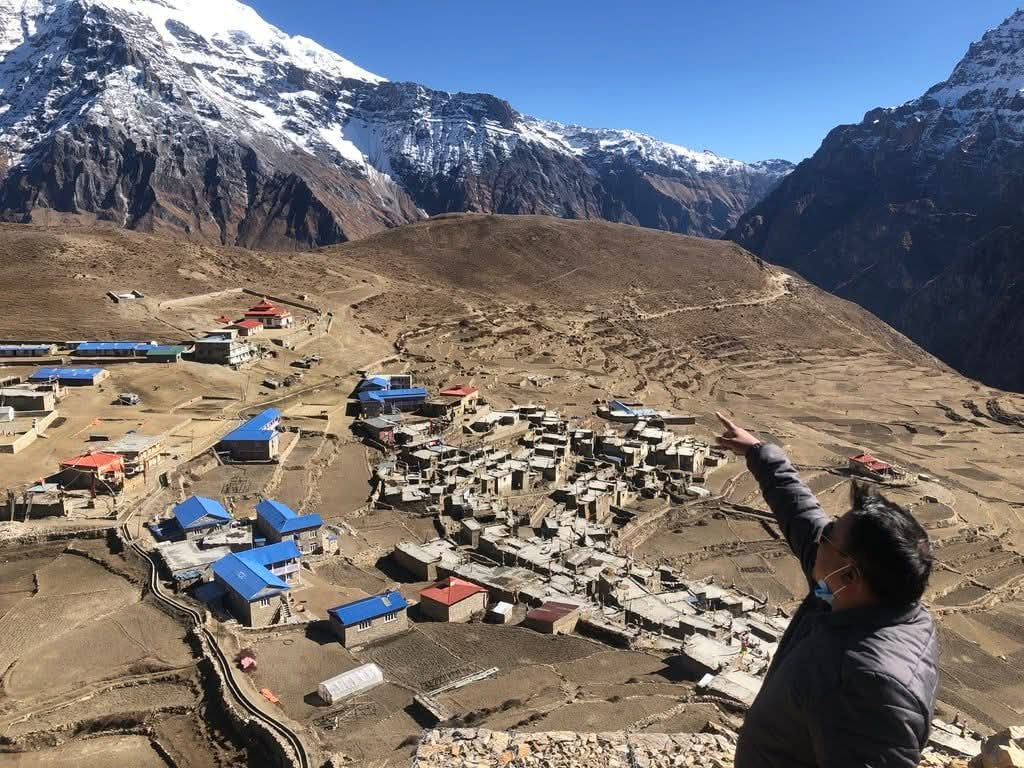A large-scale waste cleanup initiative has been successfully conducted along the Annapurna Circuit Trail, considered one of the most dangerous trekking routes in the world. The operation focused on a critical section of the trail between Tankimanang and Thorong La Pass, which lies within Nepal’s popular Annapurna Conservation Area and sees a significant influx of international trekkers each year.
Annapurna Trail Ranked Among Top 10 Riskiest in the World
The Annapurna Circuit has consistently been ranked among the top ten most hazardous trekking routes globally. Despite its risks, the trail attracts thousands of adventure seekers annually due to its breathtaking views, diverse landscapes, and cultural richness. However, with increasing footfall, the issue of non-biodegradable waste accumulation has grown, raising environmental concerns along the route.
Tankimanang to Thorong La: Major Cleanup Undertaken
According to Dhak Bahadur Bhujel, Chief of the Annapurna Conservation Area Project (ACAP) Office in Manang, the recent cleanup drive collected a significant volume of non-degradable waste from the trail. “We focused our efforts on the stretch between Tankimanang and Thorong La Pass, where unmanaged waste had started posing serious threats to both the environment and the overall trekking experience,” he said.
The waste, mainly consisting of plastic wrappers, bottles, cans, and other synthetic materials, had accumulated over years due to inadequate disposal by trekkers and porters. This type of waste is known to persist in the ecosystem for decades, disrupting natural habitats and contributing to long-term climate effects.
Policy in Place But Enforcement Remains Weak
Bhujel emphasized that trekkers are required to carry out their non-biodegradable waste as per the conservation area’s policy. “Since this trail is internationally popular, the presence of unmanaged waste tarnishes its reputation. There’s a policy that obliges trekkers to carry back all their waste, but enforcement has been poor,” he added.
Despite clear guidelines, the lack of monitoring and awareness has resulted in trekkers and local service providers leaving behind waste in shelters, along paths, and near water sources. In the long run, this not only impacts the environment but also deteriorates the quality of tourism in the region.
65 Bags of Waste Collected
The Tourism Management Sub-committee of Tankimanang reported that 65 sacks of waste were collected during the cleanup campaign. These included food wrappers, plastic bottles, aluminum cans, damaged equipment, and even discarded footwear. The collected waste was safely managed and transported for appropriate disposal, ensuring it would not remain in the fragile Himalayan environment.
The sub-committee noted that conducting such cleanups during the off-season is more effective, as tourist traffic is low and the trails are more accessible for maintenance work. “We took this opportunity before the next peak trekking season to clean the area so that incoming tourists can enjoy a cleaner and safer environment,” a spokesperson said.
Joint Effort for Environmental Protection
The cleanup was a joint initiative of the Annapurna Conservation Area Project (ACAP) Area Office and the Tourism Management Sub-committee of Tankimanang. Their combined efforts aim not only to clean but also to raise awareness among tourism stakeholders, including guides, lodge owners, and porters, about the need for sustainable trekking practices. “The environment is our responsibility. Without its preservation, tourism here will decline. That’s why we are working together, government offices and the local community, to safeguard it,” Bhujel reiterated.
Impact of Waste on Climate and Biodiversity
Experts warn that unmanaged waste in high-altitude regions can have serious consequences on biodiversity and climate. Non-degradable materials disrupt soil and water systems, harm local fauna, and add to the region’s carbon footprint. The Annapurna region, already witnessing the impact of climate change, including glacier retreat and irregular weather patterns, cannot afford the added pressure of environmental neglect. “The garbage that remains here for years contributes to climate change. It might seem small in volume, but its impact is immense in such a delicate ecosystem,” Bhujel noted.
Future Plans and Sustainable Tourism
In response to the growing concern, ACAP and local stakeholders are planning to launch awareness campaigns and stricter implementation of the “carry-in, carry-out” waste policy. There are also talks of introducing eco-friendly permits, wherein trekkers will have to deposit a waste security amount that will be refunded only after proper waste disposal.
Tourism entrepreneurs have expressed support for such initiatives. “A clean trekking route enhances the tourist experience and promotes return visits. We are ready to collaborate in keeping our trails clean,” said one lodge owner in Manang.
Preserving Annapurna for the Future
The recent cleanup operation along the Annapurna Circuit is a timely and necessary step in ensuring that one of Nepal’s most iconic trekking trails remains safe, clean, and sustainable. With over 65 bags of waste removed and renewed community commitment, the region sets an example of how tourism and conservation can go hand in hand.
However, the real challenge lies ahead, maintaining cleanliness throughout the trekking seasons and enforcing policies to prevent recurrence. For now, the pristine landscapes of Manang and Thorong La breathe a little easier, thanks to the joint efforts of conservation authorities and local stakeholders.






